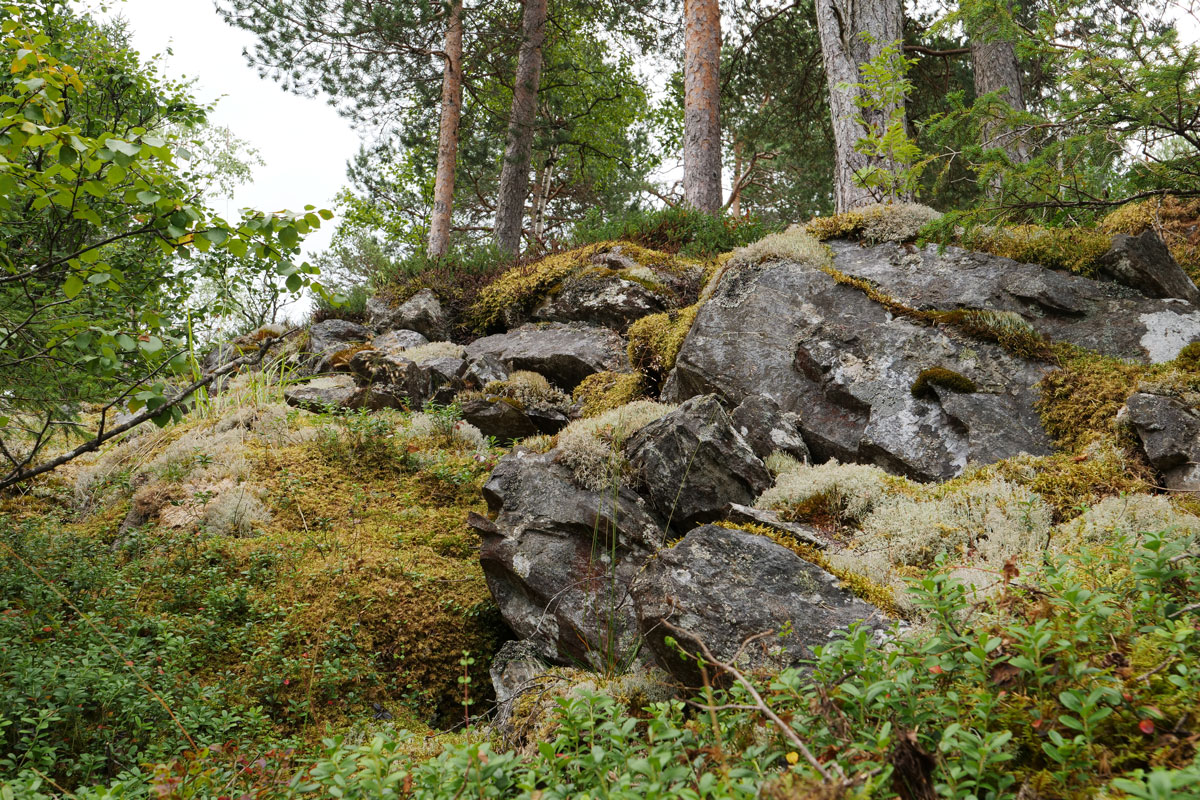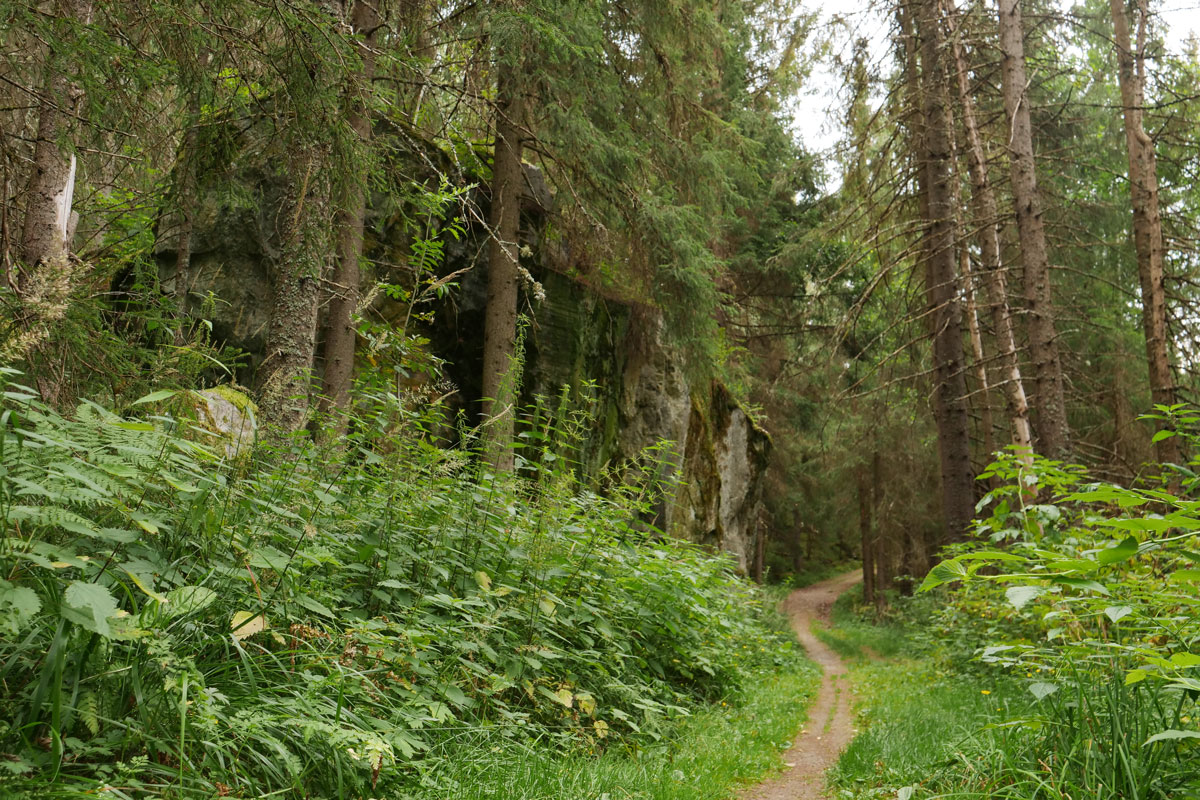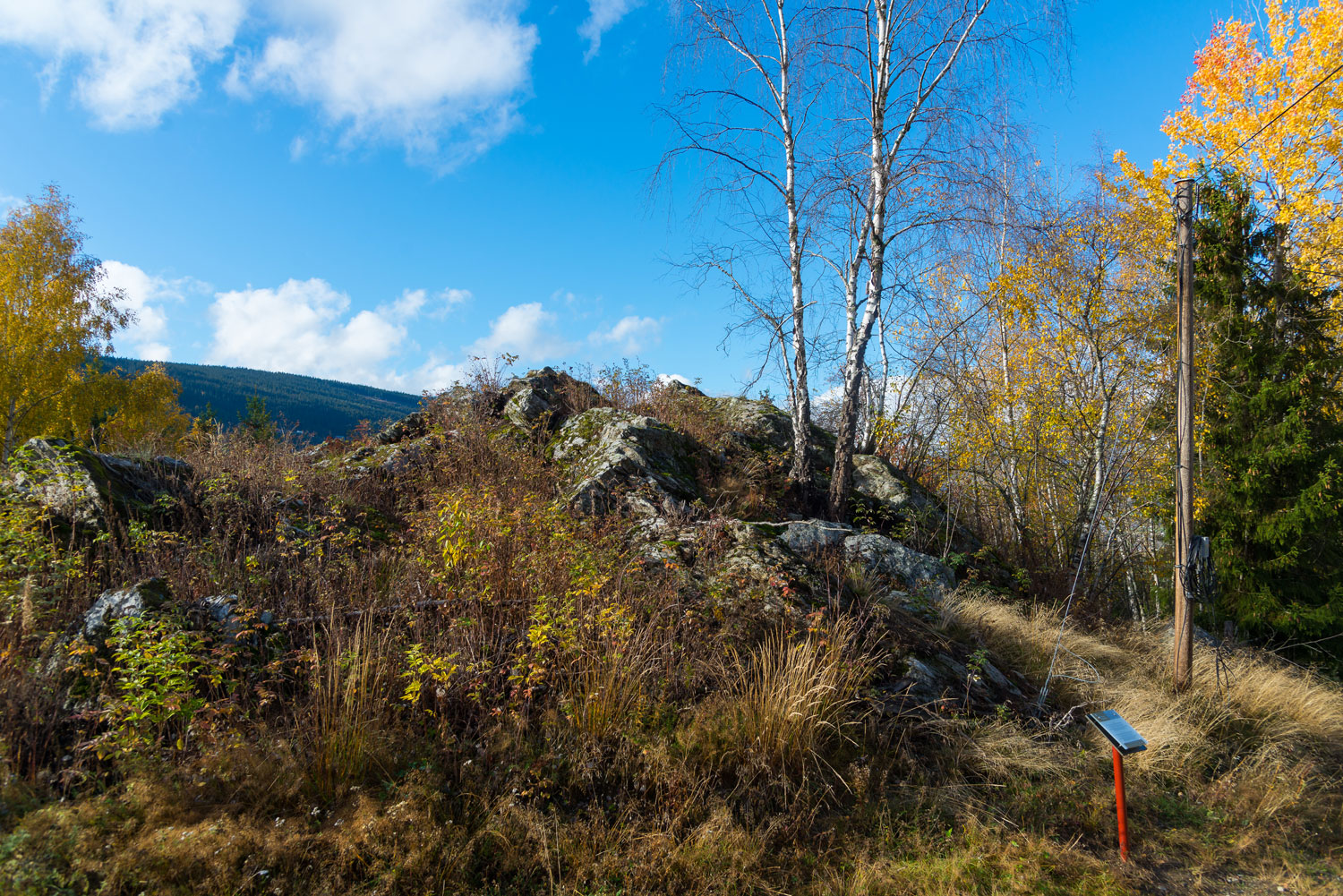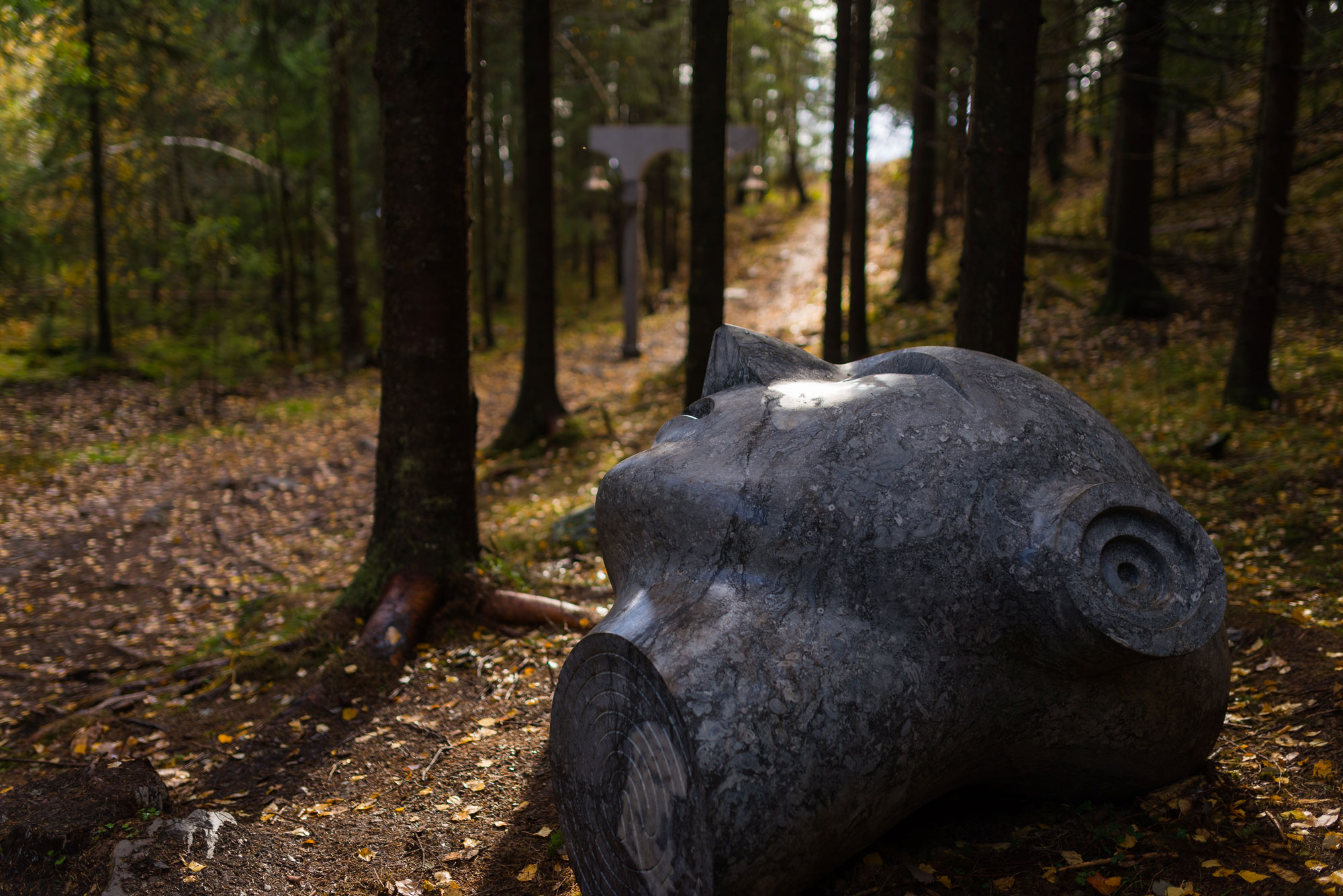Welcome to Høgkleiva
At Høgkleiva, modern art meets layer upon layer of history and folklore – the intriguing Iron Age hillfort, the legend of the sister bells, and the story about the execution site.
The “Hovudet, Klokkeporten & Falkesteinen” artwork creates new gateway to the old fortification. Does the history of the ancient walls resonate in the sculptures?
The King’s Road‘s old wanderers have been replaced by modern-day pilgrims and hikers. The medieval tradition of pilgrimage has been revived. Many have walked across Høgkleiva before us. Some light-footed, others with heavy steps. A world of thoughts and endeavours has passed by.
Høgkleiva is a passage. A world that swings like a pendulum between history and art. Between danger and safety. From the outside to the inside. What new connections will our steps create?

Hillfort
People were living in the valley long before the road was built, and they were often at war. From the hillfort at Høgkleiva, enemy soldiers and other foes could be spotted at long distance. Protected by the walls and the steep hill, you were as safe you could be. It is near impossible to capture the distant resonance of the early Iron Age. We have to go almost 2,000 years back in time. Would we have understood their shouts, understood their warnings – or would it be like visiting a foreign land? Would we have understood their axes and their spears? The Roman-like swords, the skilled archers drawing their bows, the prayers to unfamiliar gods. Were sacrifices expected? Were they able to protect the farms further down on the hill?

Pilgrims’ path
Today’s pilgrimage route follows the road and is easier to walk than the steep trails further up the hill used in the Middle Ages. We are in the landscape trodden by medieval pilgrims on their slow journey to Nidaros.

The King’s Road across Høgkleiva
Picture the horses struggling with carts and carriages up these hills. Do you hear the drivers shouting and cracking their whips above the manes dripping with sweat? Or the servants’ footsteps getting lighter as the road levels out and the top is in sight? When the Dano-Norwegian king Christian VI and his court struggled up the hill to Høgkleiva in 1733, improvements had been made to the road in advance. The queen, however, still demanded to be carried in a sedan chair.
It is the sound of the 1700s. Crags and mountains are blasted away, and walls are built to make way across scree and along cliffs. A new era has begun – with common sense, science, and engineers.
The road stretched from the valley and up the steep hill, wedged between the ancient footpaths, the hillfort walls, and the beacon above Høgkleiva. If the beacon was lit, there was danger afoot. Sleeping on duty was not allowed.

Place of execution
Control of the realm changed hands from Christian to Fredrik. But the monarch did not look favourable upon Sigrid Gulbrandsdotter Brandstadkampen. Neither pleas nor witness statements helped her during her trial. In 1764, the executioner’s axe fell on Sigrid’s neck – it was the punishment for infanticide. The place of execution was further down the hill, north of Høgkleiva, and the villagers had to watch the beheading. These were public events, and were macabre and brutal. The man who had fathered the child walked unpunished. Desperate pleas and the axe swishing through the air are also sounds of the 1700s.

Room for Reflection
It is like those who walked here before us have created an invisible fabric into which we are woven. An echo of footsteps blends with stones tumbling down the hill, twigs snapping, and the new-old sound of church bells. Bells that have also warned of danger.
The art project “Hovudet, Klokkeporten & Falkesteinen” at Høgkleiva connects those of us walking this ground today with what may have happened here in the past. Inspired by the legend of the sister bells, “Klokkeporten” is like a gateway to a new, unfamiliar world.
Høgkleiva is a stop along the way.
Take a break after the climb.
Practical information
Location
Høgkleiva is located along the pilgrims’ path between Fåvang and Ringebu Stave Church, approx. 3 km south of Ringebu centre. The path is of good quality with some steep climbs up to Høgkleiva, and is a beautiful walk through the forests and cultural landscape of Gudbrandsdalen.
Directions
Access to Høgkleiva is by foot. Follow the pilgrims’ path north from Fåvang (approx. 3 hours), or start by Ringebu Stave Church and follow the pilgrims’ path south (approx. 40 minutes). Fully way-marked.
Parking
Parking is available by Ringebu Stave Church or in the centre of Fåvang, and you can pick up the pilgrims’ path by the bridge “Den Høye Bro”.
Safety
Beware of cliffs and steep terrain. Passage at your own risk.
Campfires and open flames
Open fire in the Høgkleiva area is prohibited all year round.
Cultural heritage site
The hillfort is a protected cultural heritage site. Any interference with or damage to the area is a criminal offence.
Art installations
Please handle the art installations with care: You may climb on “Falkesteinen”, but not on “Hovudet” and “Klokkeporten”.
Leave no trace
Protect nature; remember, leave no trace.
